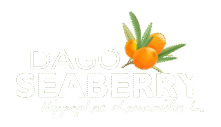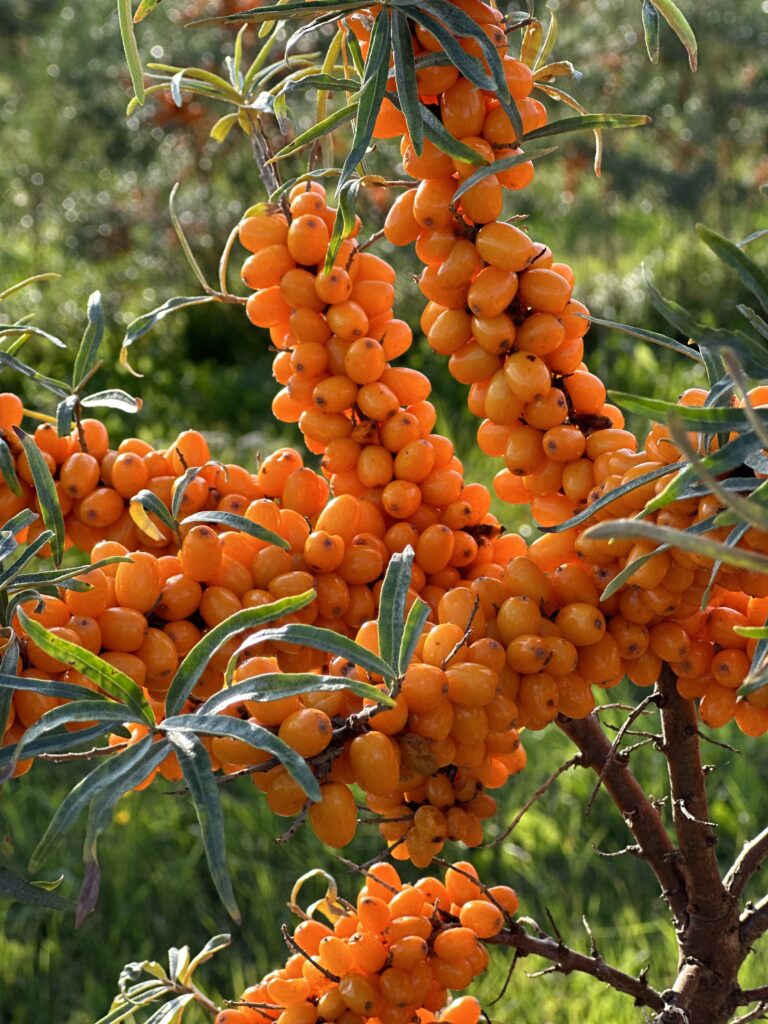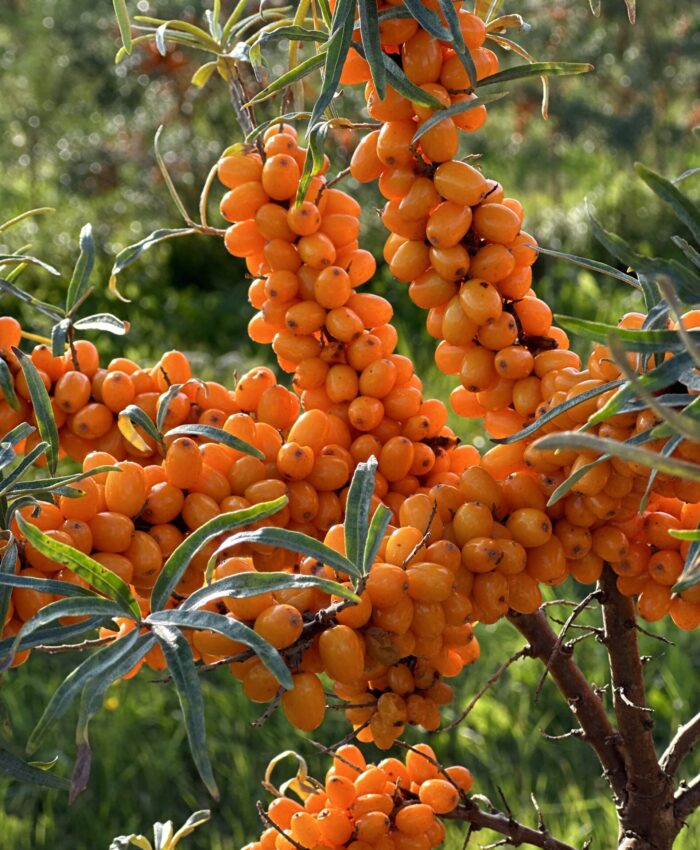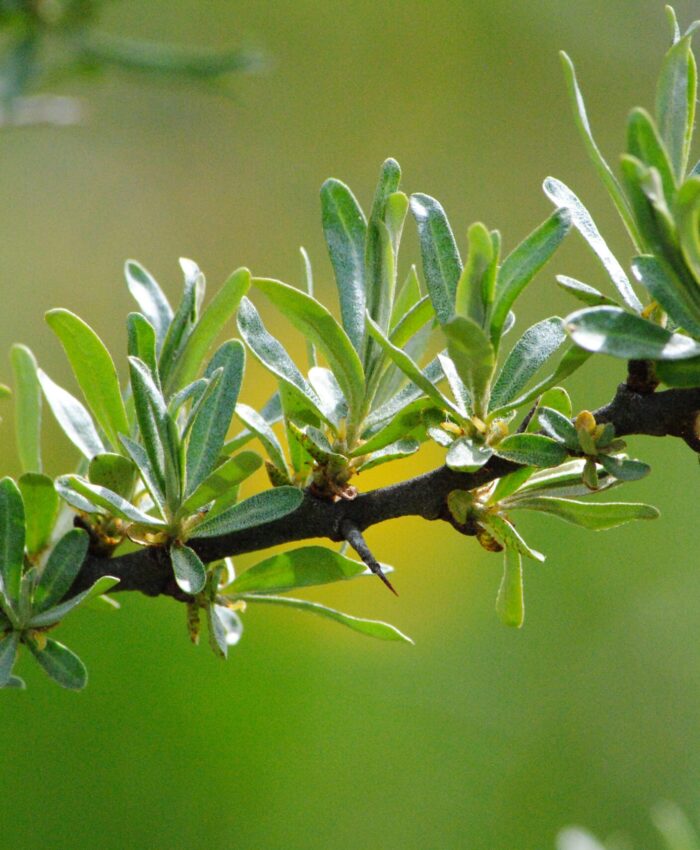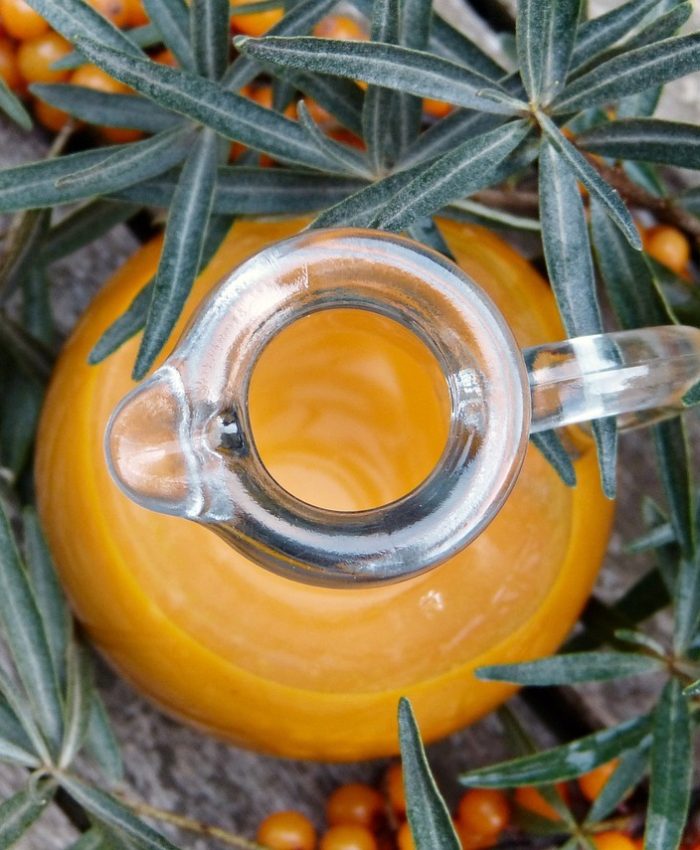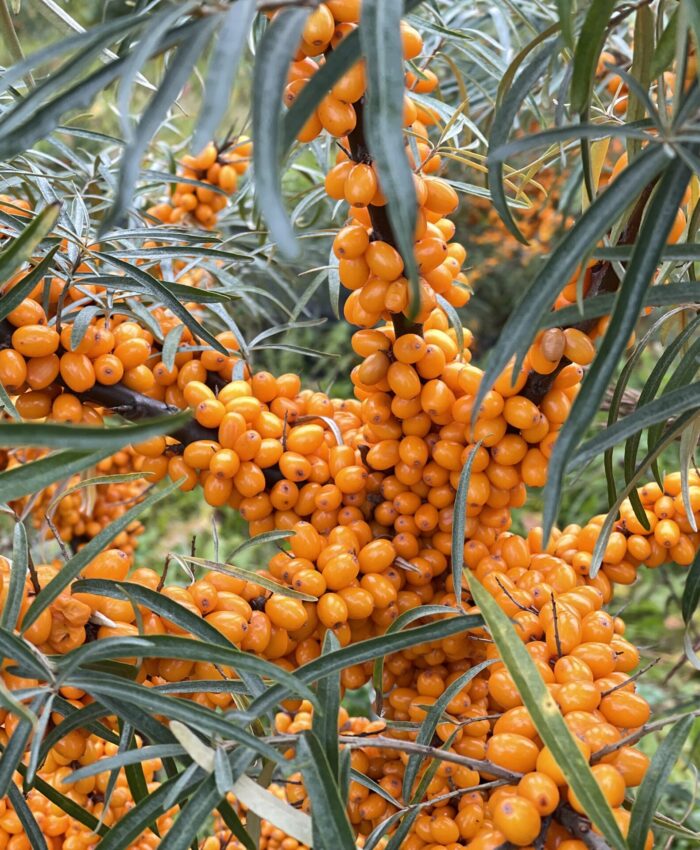May: Flowering and Pollination
Understanding how sea buckthorn berries ripen begins with observing their early developmental stages. Each berry goes through a complex process that starts in spring, long before the fruit is even visible, and this directly affects not only the final quality and usability of the berries, but also the overall yield.
Sea buckthorn is a dioecious plant, meaning male and female flowers grow on separate bushes. Flowering typically begins in early May as nature awakens from winter. The blossoms are tiny and modest — not showy or scented — because pollination relies on wind, not insects.
Instead of attracting pollinators, the flowers are shaped for maximum aerodynamics, opening only when weather conditions favour effective pollen dispersal. A dry and warm May supports good pollination, with male plants effectively sending pollen to female flowers. Cold or rainy weather, on the other hand, can disrupt this delicate phase and lead to lower fruit yields in autumn.
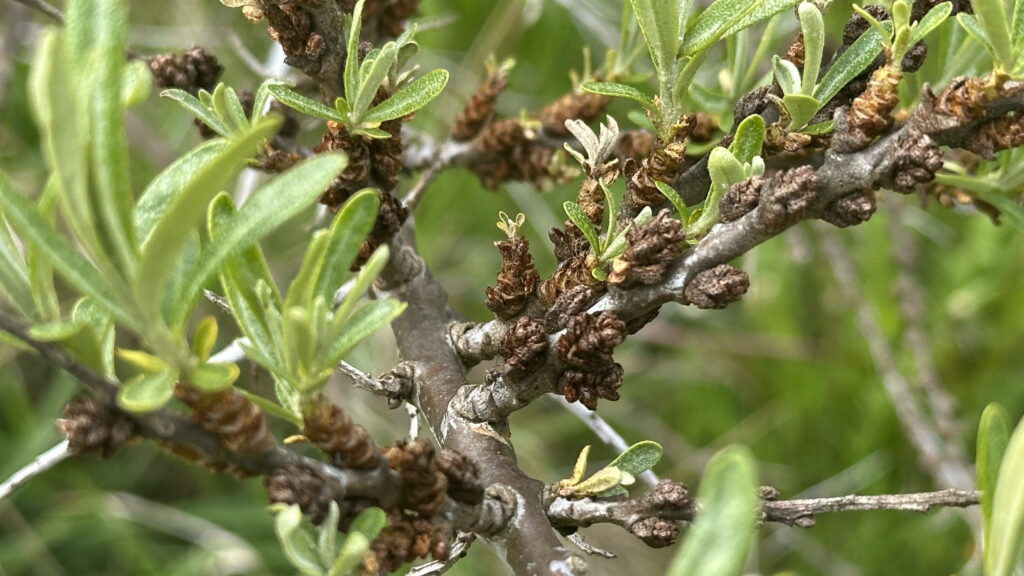
June: The First Signs of Fruit
Once pollinated, the ovary of the female flower begins to develop into a berry. At first, the fruitlets are minuscule and hidden, even to experienced eyes. But during June, they start to enlarge as cell division and differentiation get underway forming the seed, flesh, and outer skin of the future berry.
At this stage, the plant is especially sensitive. Adequate soil moisture and stable temperatures are crucial. A sudden drought or late frost can significantly affect the number, size, and viability of the berries. If the weather cooperates, fruit development accelerates, though berries remain green and modest for now. Biochemically, however, they’re already preparing for the next stage.
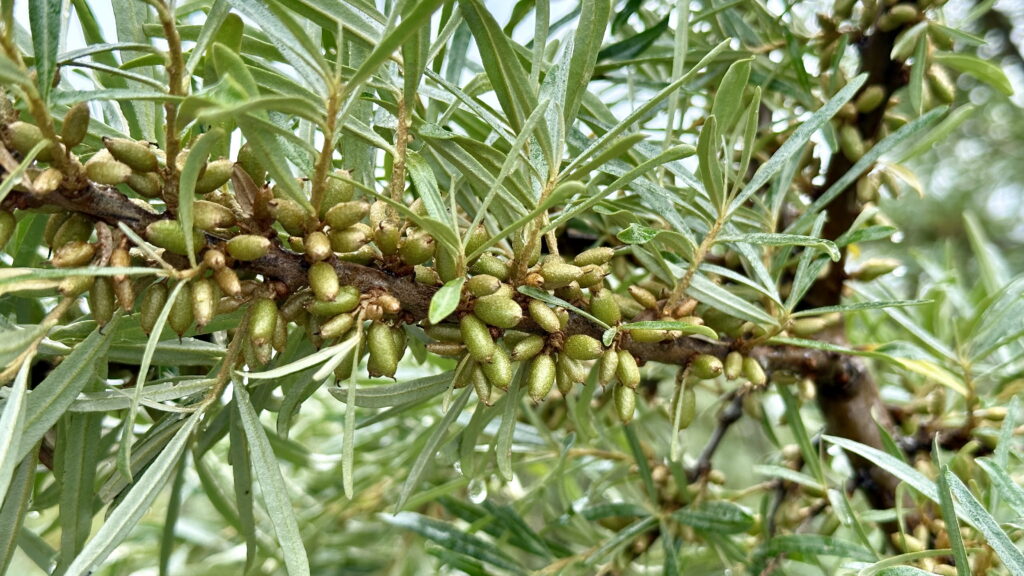
July–August: Nutrient Accumulation
In mid- to late summer, the internal ripening process gains speed. The plant starts concentrating key bioactive compounds in the fruit, including vitamin C, polyphenols, plant oils, and carotenoids (like beta-carotene and lutein). Carotenoids are what give ripe sea buckthorn berries their deep orange hue.
At the same time, oil begins accumulating in the berry pulp and seeds — especially valuable unsaturated fatty acids. These compounds aren’t just nutritionally important; they also influence the berry’s ability to stay fresh. More oil means less water loss, which helps the berries retain firmness and resist shriveling.
But oils can be sensitive to oxidation. That’s where nature has another safeguard: sea buckthorn also contains powerful antioxidants like vitamin E (tocopherols) and polyphenols, which help prevent rancidity and preserve flavour and aroma, even in frozen storage. Thanks to this natural balance, oil-rich berries are also more freeze-tolerant, as their cell structures stay more intact. All of this makes sea buckthorn a very storage-friendly fruit especially when quick-frozen right after harvest.
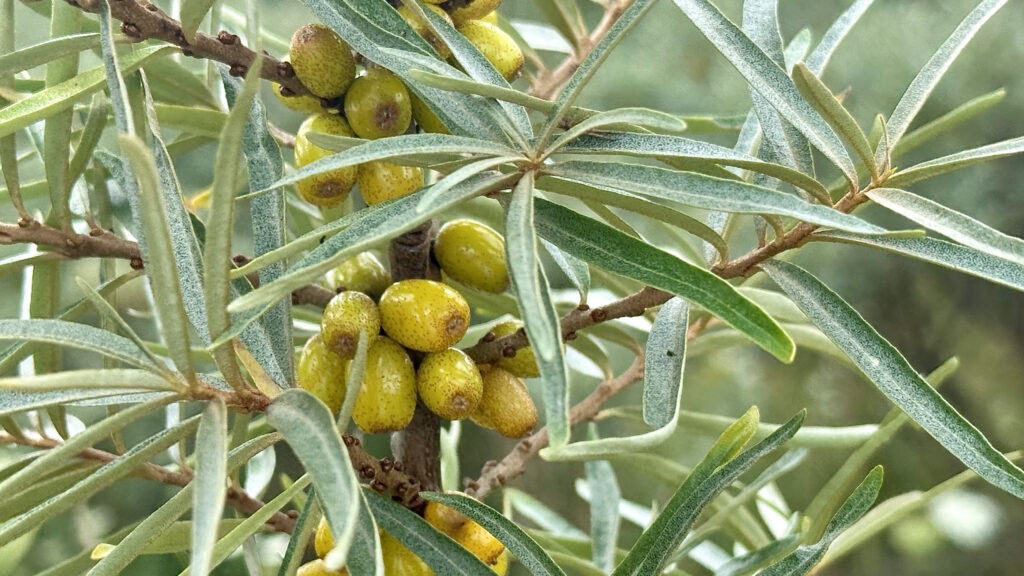
Late August–September: Colour and Flavour
As the nights get cooler and days shorter, the plant receives a natural cue to finish ripening. Carotenoid levels rise sharply, turning the berries from pale yellow to deep orange. At the same time, texture softens as the berries take in more water becoming juicier, plumper, and more elastic.
The flavour also evolves. Initially sour and astringent, the berry becomes slightly more mellow as organic acids decline and oil levels increase. Sugar content may rise a little, but overall sweetness remains low even in ripe berries. The result is a classic sea buckthorn profile which is tangy, intense, and aromatic.
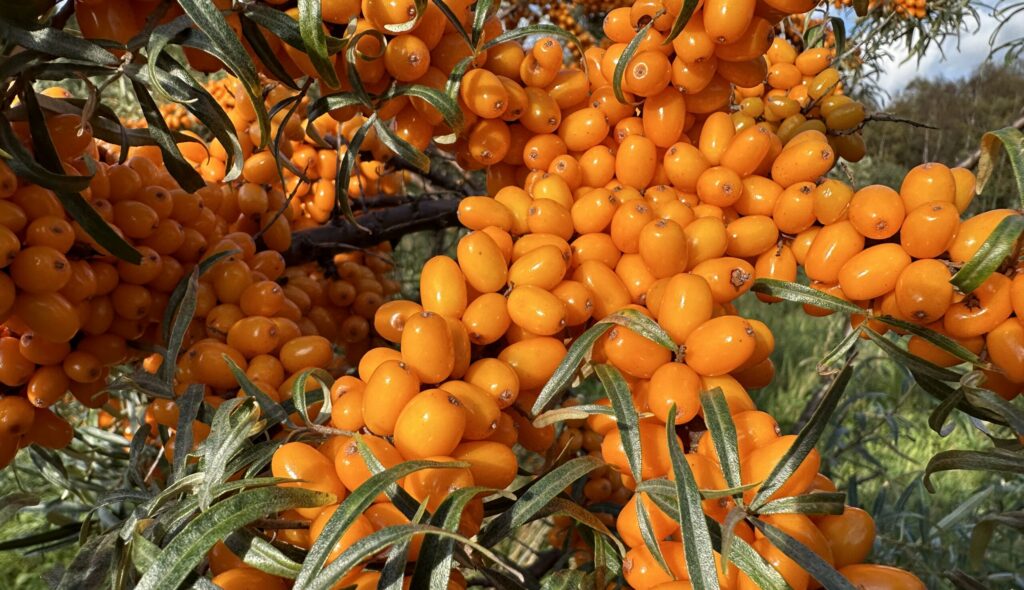
When Is the Right Time to Harvest?
In Estonia, our sea buckthorn harvest typically spans early September to mid-October, depending on the variety and weather conditions. But harvest timing isn’t random, it’s a strategic decision that shapes the berries’ composition, taste, and processing suitability.
Optimal Ripeness:
- Peak vitamin and oil levels
- Suitable texture for processing
- Stability for transport and storage
Harvest Timing Depends on the End Product
- Vitamin C–Rich Products (e.g. powders, freeze-dried berries): Picked in late August or early September, when vitamin C levels are at their peak. At this point, texture is still firm and oil levels are lower. Overripe berries may lose some of their ascorbic acid content.
- Table Berries and Juice Production: Harvested at full ripeness when flavour is more balanced (less sharp acidity), and berry structure is strong enough to keep its appearance. A slightly soft, but not mushy texture is ideal for processing and freezing. Typically mid to late September.
- Oil-Rich Berries: Collected as late as possible, mostly in October, to capture the highest levels of oil and carotenoids. These berries are best suited for oil production and extracts.
At Dago Seaberry, we specialise in late harvest. We wait for the berries to fully mature so they reach their highest oil content, most complex flavour profile, and longest storage life. Every year, we assess the conditions and make harvest decisions based on a combination of factors: berry development, weather trends, product demand, and optimal nutrient balance.
Sources:
- EFSA (2012). Scientific opinion on the re-evaluation of lutein (E 161b) as a food additive. EFSA Journal, 10(2), 1505.
- Beveridge, T., Li, T. S. C., Oomah, B. D., & Smith, A. (1999). Sea buckthorn products: Manufacture and composition. Journal of Agricultural and Food Chemistry, 47(9), 3480–3488.
- Li, T. S. C., & Schroeder, W. R. (1996). Sea buckthorn (Hippophaë rhamnoides L.): A multipurpose plant. HortTechnology, 6(4), 370–380.
- Szczepanek, M., Ligocki, M., & Stuper-Szablewska, K. (2020). Impact of environmental conditions on pollination and yield of sea buckthorn. Environmental and Experimental Biology, 18, 115–121.
- Ruan, Y. L., et al. (2017). Sugar input, metabolism, and signaling mediated by invertase. Molecular Plant, 3(5), 942–955.
- Yang, B., et al. (2009). Health-promoting properties of sea buckthorn juice. Journal of the Science of Food and Agriculture, 89(1), 119–126.
